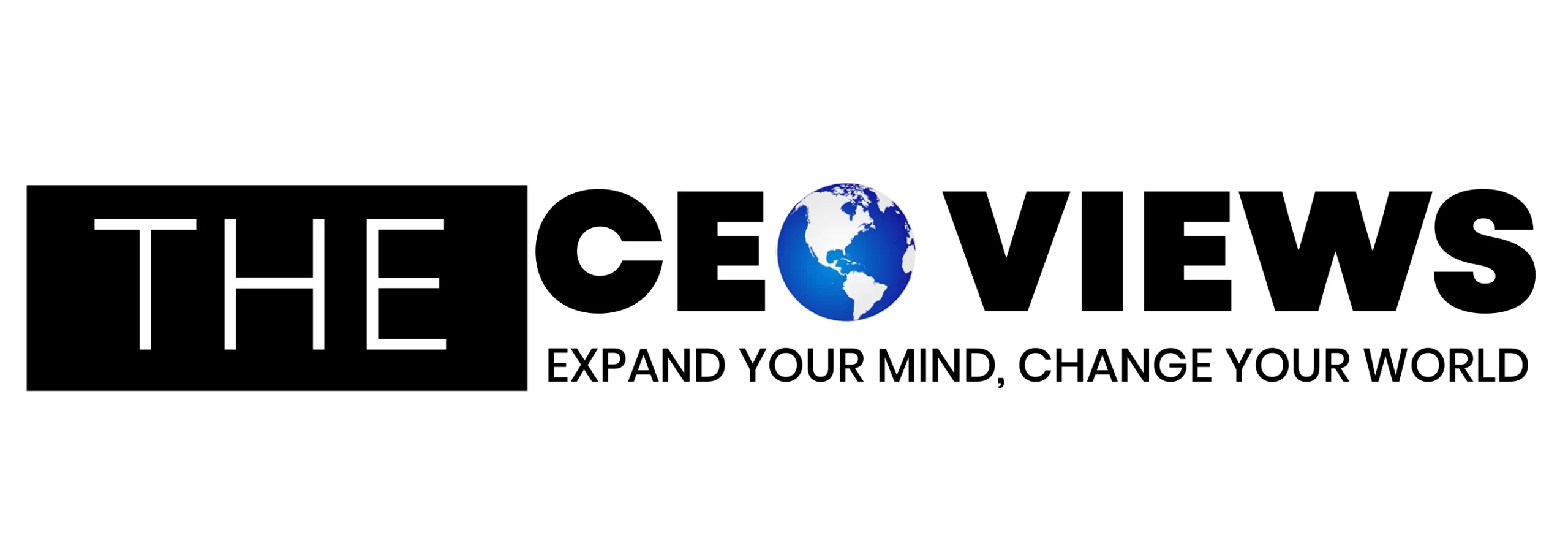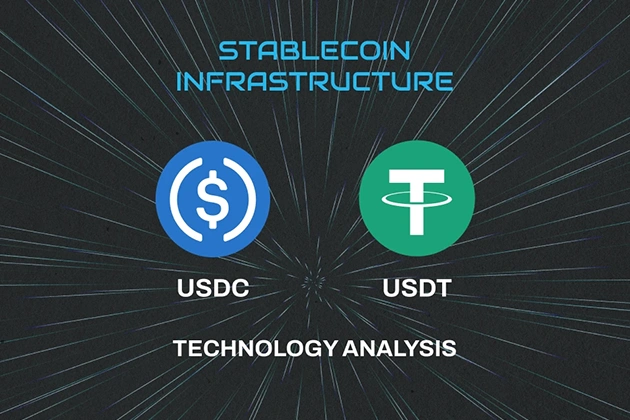The infrastructure behind stablecoins is one of the most important developments in modern finance. As stablecoins have grown in popularity due to their ability to provide stability and reduce volatility, understanding the tech behind the major players is key to making informed decisions. USDC and USDT, the two largest stablecoins by market cap, use different tech that impacts performance, security and adoption. Both aim to be 1:1 pegged to the US dollar but their infrastructure choices create meaningful differences in transparency, compliance and operational efficiency.
Stablecoin Infrastructure Basics
Stablecoin infrastructure is the tech, compliance and operational systems that enable these digital assets to be stable and transactional. The importance of robust infrastructure can’t be overstated as it directly impacts transaction speed, security, regulatory compliance and user adoption.
Stablecoins are tokenized cash issued by private institutions on public blockchains, pegged to fiat currency and backed by audited reserves. The infrastructure supporting these tokens must solve multiple technical challenges: maintaining the currency peg, ensuring transaction finality, providing liquidity and meeting evolving regulatory requirements. The choice between USDC and USDT often comes down to which infrastructure solves these fundamental challenges best for a specific use case such as cross border payments, DeFi protocols or institutional settlement.
Modern stablecoin infrastructure must also be able to clear good funds and settle a payment in near real time, requiring verification of existing funds and confirmation of sender and receiver before a transaction can be initiated. This is a big step up from traditional payment rails which take 1-5 business days to settle.
USDC Infrastructure Overview
Centre Consortium Tech Stack
USDC’s infrastructure was originally developed through the Centre Consortium, a collaborative framework between Circle and Coinbase to establish regulated stablecoin standards. Circle now has full control of USDC after the Centre Consortium dissolved in 2023. The tech stack is focused on regulatory compliance and transparency through standardized protocols that enable institutional adoption.
The Centre framework introduced several technical innovations including standardized smart contract templates, compliance-first architecture and interoperability protocols that work across multiple blockchain networks. USDC benefits from the robustness and large developer community of the Ethereum ecosystem providing a solid foundation for complex DeFi applications and institutional integrations.Circle’s tech is enterprise grade security and compliance automation. Automated compliance checking, real time reserve monitoring and standardised APIs for easy integration with traditional finance and emerging blockchain.
Ethereum and Multi-chain Implementation
USDC is based on the Ethereum blockchain as an ERC-20 token, leveraging Ethereum’s mature smart contract capabilities and large developer ecosystem. But USDC has strategically expanded beyond Ethereum to support multiple blockchain networks, including Solana, Avalanche, Algorand, and Polygon.
This multi-chain approach addresses scalability concerns while keeping technology consistent across different networks. Each implementation preserves the core USDC functionality while optimizing for the specific characteristics of each chain, like Solana’s high throughput or Algorand’s energy efficiency. The multi-chain approach lets users choose the right network for their specific needs for speed, cost or environmental impact.
The technical implementation ensures USDC is identical across all supported chains with standardized smart contracts that enable seamless bridging between chains. This technology supports the growing demand for cross-chain DeFi applications and institutional use cases that require network flexibility.
Compliance and Transparency Features
USDC’s infrastructure is designed with compliance in mind, unlike many other stablecoins. USDC is audited monthly to confirm every token is backed 1:1 by the US dollar, so it’s more transparent and accountable than some others.
The technology includes automated compliance monitoring, real-time reserve reporting and regulatory compliant transaction screening. Circle Internet Financial Europe SAS is a French electronic money institution that has complied with the requirements of MiCA, so USDC is a fully MiCA compliant stablecoin. This compliance infrastructure makes USDC ready for institutional adoption and regulatory approval in major markets.
Advanced compliance features include automated AML/KYC screening, sanctions list checking and transaction monitoring that runs in real-time without compromising transaction speed or user experience.
USDT Technology Foundation
Tether Limited’s Technical Approach
USDT was launched on the Omni Layer protocol on the Bitcoin blockchain and later on the Ethereum blockchain as an ERC-20 token. Tether Limited’s technical philosophy is to be as compatible and liquid as possible across the broadest range of platforms and applications.
The company’s approach is pragmatic and prioritizes market access over technical innovation. This allowed for faster transactions and wider compatibility with exchanges. Tether’s infrastructure uses proven and battle tested technology rather than bleeding edge innovation, it’s a conservative approach to technical risk management.
Tether’s technical implementation includes robust bridging mechanisms that enables USDT to be identical across multiple blockchain networks while preserving the token’s fundamental characteristics and utility.
Blockchain Diversification Strategy
Tether tokens exist on multiple leading blockchains including Algorand, Avalanche, Bitcoin Cash’s Simple Ledger Protocol (SLP), Ethereum, EOS, Liquid Network, Omni, Polygon, Tezos, Tron, Solana, Kava and Statemine. This is the most extensive blockchain diversification strategy among major stablecoins.
The diversification approach ensures USDT is always available regardless of the specific blockchain network issues or limitations. Each blockchain implementation is optimized for that network’s characteristics while maintaining core USDT functionality. This has proven to be very effective in maintaining liquidity and availability during network congestion or technical difficulties on any single blockchain.
Tether’s technical team has specialized implementations for each supported blockchain to ensure optimal performance and compatibility while preserving the essential characteristics that make USDT fungible across all networks.
Liquidity and Market Integration
USDT’s infrastructure prioritizes deep liquidity across centralized and decentralized exchanges. USDT is the most accepted stablecoin because it has the largest market cap, so users can trade it on DeFi platforms and crypto exchanges. The infrastructure supports high-frequency trading applications and large volume transactions with minimal price impact.
The liquidity infrastructure includes specialized market maker protocols, automated liquidity provisioning systems and integration with major trading platforms to ensure USDT remains the most liquid stablecoin. USDT is the biggest stablecoin in the market, with infrastructure designed to handle massive transaction volumes without compromising stability or performance.
Head-to-Head: USDC vs USDT Infrastructure
Performance Benchmarks
When comparing infrastructure performance, here are the key differences:
Transaction Speed and Throughput:
USDC: Optimized for specific networks with 15 seconds average confirmation time on Ethereum, under 1 second on Solana
USDT: Broadly compatible with variable performance based on chosen network, 10 minutes on Bitcoin, under 1 second on Tron
Network Fees:
USDC: Network dependent, $1-50 on Ethereum, under $0.01 on other chains
USDT: Highly variable, under $0.01 on Tron, $1-50 on Ethereum
Reliability and Uptime:
USDC: 99.9%+ uptime with built-in redundancy across multiple networks
USDT: 99.8%+ uptime with extensive network diversificationUSDC has the highest transaction volume for stablecoins — despite having a smaller market cap than USDT, it’s used more in DeFi and institutional applications.
Security and Reliability Factors
Both stablecoins have robust security, but their approach is very different. USDC has enterprise grade security with automated compliance monitoring, multi-sig wallets and regular third-party security audits. The infrastructure has real-time threat detection and automated incident response systems.
USDT leverages its decade long operational history across multiple blockchain implementations to provide battle tested security protocols. With nearly 10 years of operation, USDT has proven itself against various attack vectors and has security practices across its diverse blockchain network.
Developer Ecosystem and API Support
USDC has developer tools including standardised APIs, extensive documentation and enterprise-grade SDKs for institutional integration. Centre has developer resources, while Circle is expanding API capabilities for financial services integration.
USDT prioritises broad compatibility over special developer tools, focusing on consistent functionality across its many chain presence. The developer ecosystem benefits from USDT’s wide adoption and deep liquidity, making it the go-to for trading apps and high frequency trading systems.
USDC to USDT Exchange: Infrastructure Impact
The infrastructure of both stablecoins affects conversion rates, slippage and execution speed when swapping between them. Infrastructure differences impact liquidity depth, USDT has more liquidity across more pairs due to its wider market presence and longer history.
Network selection affects conversion costs and speed. Converting USDC to USDT on Ethereum during congestion can cost over $50, same transaction on Polygon or Solana costs under $0.01. Smart traders use cross-chain capabilities to optimise conversion costs by choosing the right network for their transaction.
When comparing rates across platforms, aggregators like Swapzone provide rate comparison across multiple exchanges and networks, so users can find the best rates while considering infrastructure factors like network fees and execution speed. The infrastructure difference between USDC and USDT means optimal conversion strategies vary based on transaction size, urgency and network conditions.
Best Platforms for USDC to USDT Swaps
Major centralised exchanges like Binance, Coinbase and Kraken have direct USDC/USDT trading pairs with minimal infrastructure friction. They have the deepest liquidity and most competitive rates for large transactions, but require KYC.
Decentralised exchanges like Uniswap, Curve and 1inch Protocol allow permissionless swapping across multiple networks. Curve Finance is particularly good at stablecoin swaps with minimal slippage due to its automated market maker design optimised for assets with similar value.
For rate discovery, platforms like Swapzone aggregate quotes from multiple crypto exchanges and DEXs, so users can compare real-time rates while considering network fees and execution times. This aggregation approach helps users navigate the infrastructure complexity and find the best conversion path for their needs.
Future Development
USDC’s roadmap is focused on regulatory compliance and institutional integration. Circle is building enterprise APIs, multi-signature security and blockchain compatibility. The infrastructure is all about seamless integration with traditional banking systems and regulatory compliance across multiple jurisdictions.
Future USDC developments include programmable money, automated compliance reporting and integration with emerging payment technologies. Circle’s partnerships with major financial institutions means the focus is on infrastructure that bridges traditional finance with blockchain.
USDT’s upgrade path is all about maximum compatibility while adding more blockchain support. Tether Limited is adding support for new blockchain networks and improving cross-chain functionality. The roadmap includes liquidity protocols, transaction finality guarantees and institutional custody solutions.
Both stablecoins are investing in Layer 2 scaling solutions and cross-chain bridge technologies to handle growing transaction volumes and user demand for faster, cheaper transactions across multiple blockchain ecosystems.
Key Takeaways for Crypto Users
Both USDC and USDT serve different purposes in the crypto ecosystem. USDC is great for applications that require regulatory compliance, transparency and institutional grade infrastructure. USDT is all about maximum liquidity and broad compatibility across as many platforms as possible.
Daily transaction volumes on stablecoins could be at least $250 billion in the next 3 years. As stablecoins move beyond crypto trading into mainstream payments, understanding the infrastructure differences is crucial. The choice between USDC and USDT is simple: USDC for compliance heavy institutional applications, USDT for maximum liquidity and platform compatibility.
FAQ
Q: Which stablecoin has better tech?
A: Both USDC and USDT have robust tech, but for different priorities. USDC is compliance and transparency with enterprise-grade security, USDT is max compatibility and liquidity across the most platforms.
Q: How do transaction times compare?
A: Transaction times depend on the underlying blockchain, not the stablecoin. Both USDC and USDT can do sub-second finality on Solana or Tron, but longer on Bitcoin or during Ethereum congestion.
Q: Which is more secure?
A: Both have strong security, but USDC’s compliance-first architecture has additional automated monitoring and regulatory oversight that may be better for institutional users.
Q: Can I use both interchangeably?
A: While both are $1 pegged, they are on different networks and have different platform support. USDT has more exchange support, USDC has more DeFi support.
Q: How do reserve backing mechanisms work?
A: USDC has reserves mostly in cash and short-term US Treasuries with monthly attestations. USDT has a more diversified reserve portfolio including Treasuries, Bitcoin and gold with less frequent reporting.
Q: Where can I find the best rates to convert between USDC and USDT?
A: Rate comparison platforms like Swapzone aggregate quotes from multiple crypto exchanges and networks, and take into account network fees to show you the best conversion path based on current infrastructure.
Q: Which is better for DeFi?
A: USDC integrates better with DeFi protocols due to transparent reserve and compliance features, but USDT is better for high volume trading.
Q: What are the main regulatory differences?
A: USDC is under stricter regulatory frameworks including MiCA in Europe, USDT is global accessible with varying regulatory status across jurisdictions.










